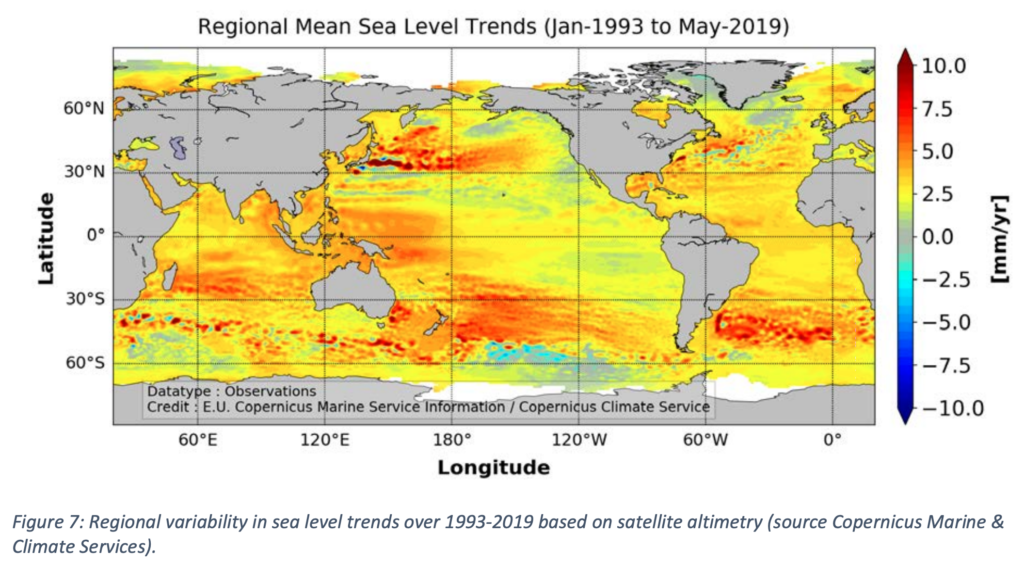
Global sea levels are at the highest since satellite records began almost three decades ago and oceans east of Madagascar, Japan, Argentina and New Zealand are among those rising quickest, the World Meteorological Organization said on Tuesday.
Sea level rise is often viewed as uniform across oceans covering more than 70 percent of the Earth but differences in heat, currents, geology and gravity can all influence what happens from place to place. It´s yet another complication for governments trying to figure out how to defend coastlines.
The WMO said the decade just ending was almost certain to be the warmest since records began in the 19th century, with greenhouse gases from human activities melting ice and causing more heatwaves, floods and more powerful storms, it said.
Sea level rise is accelerating, due to a quickening thaw of Antarctica and Greenland, according to the WMO´s provisional report on the global climate in 2019 presented at UN climate negotiations in Madrid.
“In October 2019, the global mean sea level reached its highest value since the beginning of the high-precision altimetry record (January 1993),” according to the study.
Overall, it said the average rate of sea level rise is estimated to be 3.25 mm/yr over the 27-year long period, with rates in recent years closer to 4 mm/yr.
And it underscores big regional differences.
The strongest rises (in map, below) are east of Madagascar in the Indian Ocean, east of New Zealand in the Pacific Ocean, and east of Argentina in the south Pacific. In the northern hemisphere, there is also a plume of higher seas east of Japan in the Pacific.
Red areas show where sea levels have gained more than 5 mm/yr.

“Non-uniform sea level trends are dominated by geographical variations in ocean heat content but also depend on processes involving the atmosphere, geosphere and cryosphere,” it says.
Separately, a report in September by the scientists in the Intergovernmental Panel on Climate Change (IPCC) also projected that sea level rise this century will vary a lot.
Among regions with the biggest rise will be a dark red band stretching east from South America past the southern tips of Africa and Australia.
In some places, such as the Hudson Bay in Canada, west of Greenland and the Baltic Sea, the IPCC shows blue spots where sea levels are set to fall. In many northern areas, the land is still rebounding after the end of the last Ice Age 10,000 years ago removed a vast weight of ice.
This land uplift will outpace sea level rise, for now.


It’s strange that most of the evidence that appears to support relative sea level changes is in countries that are subject to volcanic activity, earthquakes crustal subduction. Perhaps these changes are due to local crustal movements, not global sea level change, or processes involving the atmosphere, geosphere and cryosphere.